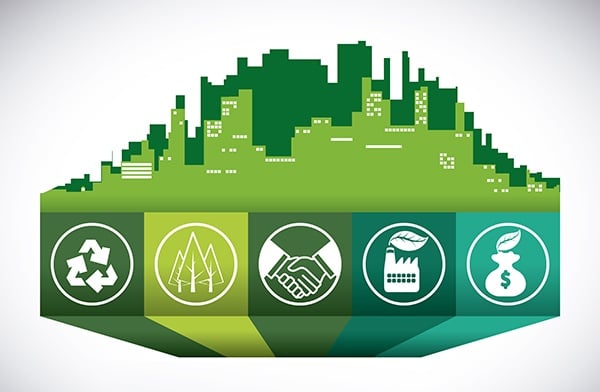
There's a reason environmental sustainability is called being "green." Done right, it doesn't just help the Earth. It also can help turn get your bottom line out of the red and save more green for your company. As a tenant, you can make environmental sustainability a part of your corporate real estate strategy in two ways. First, you can demand environmentally sustainable options in the buildings that you occupy. Second, you can become a more sustainable applicant of any building.
What You Can Request
-
Focus on new buildings. The cost of building a new property to meet LEED standards can be as little as 4 percent more than the cost of building a regular building. In addition to a lower cost than retrofitting, LEED buildings have green features built in that can be harder to include in a building that has been environmentally retrofit, like natural light and more efficient layouts. These can help to reduce your cost of occupancy.
-
Demand, and pay for, smart retrofits. It might not make sense to turn an old inefficient building into an environmental showplace, but replacing the showerhead in an employee bathroom could pay for itself in a year. Changing T12 florescent fixtures out for T5 and T8 can also pay back very quickly. Beyond requesting that your landlord make changes on your behalf, it may even make sense to allow your landlord to charge the cost back to you. While some upgrades, like photovoltaic solar panels in the Northeast take a while to pay back, others can pay back in one to three years. This could lead to a positive ROI over your initial lease term through reduced CAM expenditures.
What You Can Do
-
Set up conservation-friendly practices. If it's a beautiful sunny day and your office has a good glassline, why not shut off the lights? You'll reduce your electricity bill and help the environment. By the same token, consider asking employees to shut down their computers at night -- it can always power back up while they get their morning coffee. Some companies even set their printers to duplex by default so that they automatically save paper.
-
Locate in sunbelt states. It's generally less expensive and less energy-intensive to cool in summer than to heat in winter, so you can help the environment and your bottom line by concentrating growth in the southern US. Since many of these jurisdictions also have business-friendly regulation and tax codes, you win on that count as well.
-
Use open and flexible floorplans. An open floorplan lets you use space more efficiently, putting more people into fewer square feet. If you're using less space, you're using less energy. You're also paying less rent. An open floorplan also allows light from the windows to more effectively permeate the space, reducing lighting costs.
-
Occupy public-transit, bike, and walk-friendly locations. Reducing commuting miles helps to decrease your company's carbon footprint. It may also reduce usage of company fleet vehicles or travel cost if your workers can also use public transit during the day. Along the way, you'll also save money by not subsidizing parking while also potentially increasing employee retention by saving them the inconvenience of a traditional commute.
Other great LEED and Green CRE articles:
Reasons to Lease a Green Building
Going Green in Retail Commercial Real Estate
LEED Certified Buildings: The Savvy Tenant's Choice
Subscribe to our blog for more tips!








